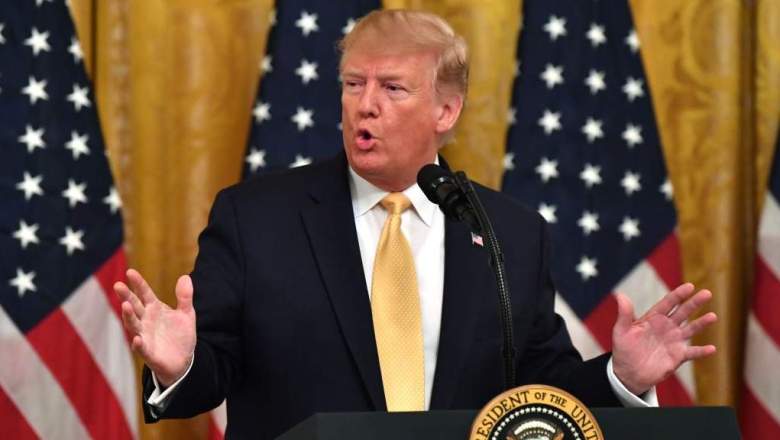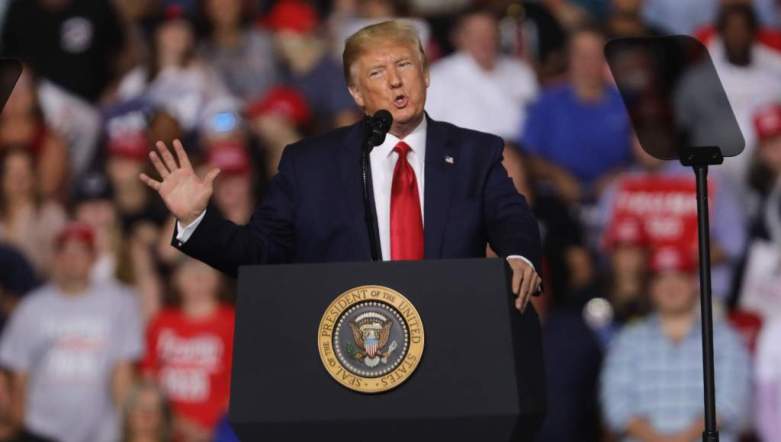
Getty
Being impeached doesn’t mean that someone is immediately removed from office. It’s a long process. So even though President Donald Trump was impeached today, he won’t be removed from office today and he may not ever be removed, depending on how people in the Senate vote after a trial. Read on for more details.
Impeachment Is Just the First Step
Impeachment is just the next step in a long process that may or may not end in Trump being removed from office.
Article II Section 4 of the U.S. Constitution says that a President can be removed from office “for, and conviction of, treason, bribery, or other high crimes and misdemeanors.” The high crimes and misdemeanors part is a bit vaguer and often open for debate. Even the process itself is a fluid situation that may change from one year to the next, depending on who is leading an impeachment inquiry.
Former President Bill Clinton was also impeached but not removed from office. In his situation, an independent counsel led the investigation. Because Ken Starr’s investigation was so extensive, the House Judiciary Committee did not conduct its own investigation.
In Richard Nixon’s case, the House Judiciary Committee investigated Nixon and then opened formal impeachment hearings. The first 20 minutes were televised and then the sessions were closed for two months. The hearings were later televised again.
After the impeachment inquiry for Trump and debates on the articles of impeachment, the House is now holding a vote. Any article that passes by a majority vote (50 percent plus one) would be grounds for impeachment.
In Trump’s case, if all 435 House members vote, they would need 218 votes for a majority to be reached and for Trump to be impeached. There are 235 Democrats in office in the House, one Independent, and 199 Republicans, Reuters explained. This means that it wouldn’t be too difficult to get those impeachment votes simply from Democrats alone.
Sometimes some articles of impeachment get approved and others do not, but even if one gets a majority vote, that would mean the President is officially impeached. The votes can often lead to heated debates in the House. But once Trump is officially “impeached,” he is NOT removed from office. Trump would still serve as President. He’s not removed until the Senate trial.
After an Impeachment Vote, There Will Be a Trial
In Bill Clinton’s case, two articles of impeachment passed by a majority House vote and two articles of impeachment failed. This made Clinton the second President officially impeached, following Andrew Johnson in 1868. Articles of impeachment were also brought against Richard Nixon, but he resigned before he was impeached.
After the articles of impeachment pass by a majority House vote, a trial will be held in the Senate. Members of the House Judiciary Committee often serve as managers, which are essentially the same role as prosecutors. The Chief Justice of the Supreme Court presides over the proceedings.
In Bill Clinton’s trial, he was defended by Cheryl Mills and had seven more on his counsel staff. The managers presented their case over three days and then Clinton’s defense lasted three days. Then for two days, members of the Senate questioned the House managers and Clinton’s defense. The trial also had depositions, had videotaped testimony instead of live witnesses, and closing arguments.
After the trial is completed, the Senate will vote on the articles of impeachment that the House passed. The Senate can choose to have public or closed-door deliberations. In Bill Clinton’s trial, they had closed-door deliberations.
For Clinton, the deliberations lasted three days and the Senate voted. Both charges failed to achieve 2/3 majority in the Senate. Clinton was acquitted.
This is likely what will happen with Trump too. A total of 67 Senators would need to vote to convict and remove the President. There are 45 Democrat Senators and 53 Republican Senators, plus two Independents who typically vote Democrat. So to reach the 67 total needed to remove Trump, they would need at least 20 Republicans to join with Democrats in voting to remove Trump (plus the two Independents). This just isn’t likely to happen.
If they can’t get the votes, then Trump will be acquitted. He’d likely continue his run for President in 2020.
